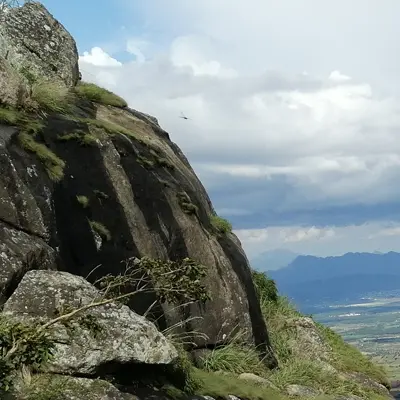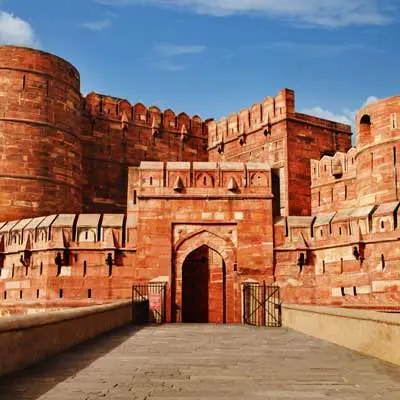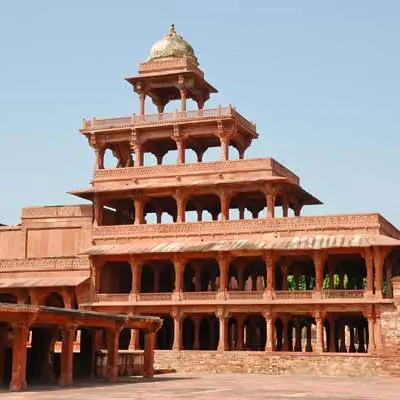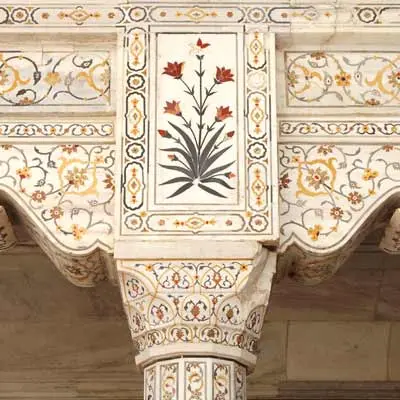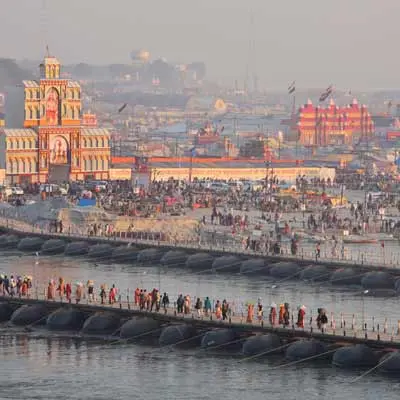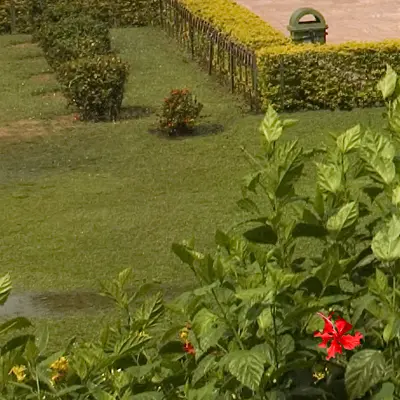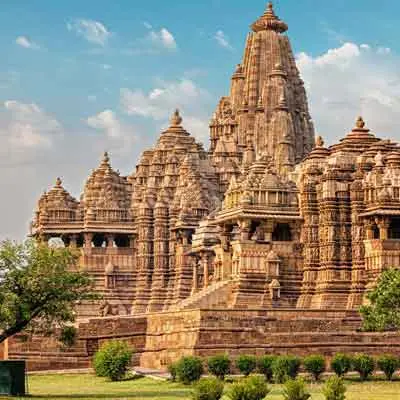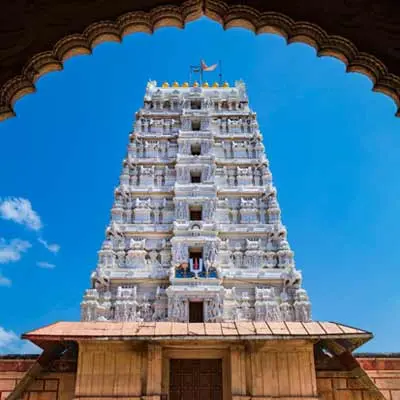
About Fatehpur Sikri
Fatehpur Sikri, a UNESCO World Heritage Site near Agra, is a fascinating highlight for anyone exploring Fatehpur Sikri tourism. Built by Emperor Akbar in 1571 as a tribute to the Sufi saint Sheikh Salim Chishti, this once-Mughal capital blends Indo-Islamic and Hindu architectural brilliance across its red sandstone palaces, mosques, and courtyards. Visitors on Fatehpur Sikri tours and packages can explore iconic landmarks like the Buland Darwaza, Panch Mahal, Diwan-i-Khas, and the marble Tomb of Salim Chishti. Nestled on the Vindhyan hills, its serene landscape and historic charm make it a must-visit. The best time to visit Fatehpur Sikri is from October to March for pleasant sightseeing.
Top Places to visit Fatehpur Sikri
- Buland Darwaza
Known as the “Gate of Victory,” this colossal gateway, built by Akbar in 1575 celebrates his triumph over Gujarat. Standing 54 meters tall, it’s one of the largest gateways in the world, symbolizing Mughal power and artistry.
- Jodha Bai’s Palace
The largest private residence in the complex, this stunning red sandstone palace reflects a harmonious blend of Hindu and Mughal architecture. It once housed Akbar’s Rajput queen, Mariam-uz-Zamani, offering insights into royal life and cultural unity. Its design features high walls and a large central courtyard for the privacy of the royal ladies.
- Panch Mahal
A five-storied open pavilion built for leisure and entertainment, the Panch Mahal’s elegant design and breezy structure showcase Akbar’s love for aesthetics. Its tiered architecture resembles a Buddhist temple and offers panoramic views of the city.
- Diwan-i-Khas
The Hall of Private Audience, famed for its single ornate pillar and circular balcony, was where Akbar held confidential discussions with his advisors and foreign dignitaries. It’s an architectural masterpiece symbolizing his inclusive philosophy.
- Jama Masjid
The main, grand mosque of the complex, which was once the largest mosque in the Mughal Empire and served as an important architectural precedent. This grand structure stands as a center of spirituality and community. It’s an active place of worship and part of the best places to visit in Fatehpur Sikri for its serene atmosphere.
- Tomb of Salim Chishti
Crafted entirely from white marble, this sacred mausoleum enshrines the Sufi saint Shaikh Salim Chishti, who foretold the birth of Akbar's heir. Devotees visit to tie threads to the intricate jalis (screens) to seek blessings for fulfilling their wishes.
- Diwan-i-Aam
The Hall of Public Audience where Akbar met his subjects and heard petitions. Its vast courtyard and elegant design reflect Mughal ideals of justice and fairness.
Top Things to Do in Fatehpur Sikri
- Heritage Walk through Mughal Marvels
Explore the majestic forts, palaces, and courtyards of Fatehpur Sikri with a local guide. Visit iconic places like Buland Darwaza, Jodha Bai’s Palace, and the Tomb of Salim Chishti to relive Akbar’s glorious era.
Duration & Timing: 2–3 hours, best early morning or late afternoon.
Best For: History lovers, architecture enthusiasts, and culture explorers.
Approximate Cost: ₹300–₹800 per person (guide included).
- Sufi Experience at the Tomb of Salim Chishti
Immerse yourself in spirituality by visiting the sacred Dargah of the revered Sufi saint. The peaceful aura and melodic qawwalis make it one of the most soulful places to visit in Fatehpur Sikri.
Duration & Timing: 1 hour, especially serene at dusk.
Best For: Spiritual seekers and culture enthusiasts.
Approximate Cost: Free (donations optional).
- Evening Photography Session at Panch Mahal
Capture the breathtaking red sandstone glow as the sun sets over the ancient city. The panoramic views make it a photographer’s paradise and a top highlight of Fatehpur Sikri tours and travels.
Duration & Timing: 1–2 hours, best during sunset.
Best For: Photographers and romantics.
Approximate Cost: ₹50–₹200 for entry and camera fees.
- Culinary Tour & Local Tastes
Savor local delicacies like Mughlai kebabs, Jalebi, and parathas at small eateries near Jama Masjid. A food walk here reveals the region’s flavourful heritage.
Duration & Timing: 2–3 hours, best in the evening.
Best For: Foodies and culture enthusiasts.
Approximate Cost: ₹400–₹1,000 per person.
- Handicraft & Souvenir Shopping
Discover traditional artefacts, marble carvings, and miniature paintings in local bazaars—a must-do for travelers who love collecting memories.
Duration & Timing: 1–2 hours, flexible.
Best For: Shoppers and art lovers.
Approximate Cost: ₹200–₹1,500 depending on choice and bargaining.
Best Time to Visit Fatehpur Sikri
The best time to visit Fatehpur Sikri is from October to March, when the weather is cool and ideal for sightseeing. This peak season offers clear skies and vibrant cultural events like Eid and Diwali, adding charm to your Fatehpur Sikri tours and travels. The shoulder season—April to June—brings fewer crowds but hot temperatures up to 40°C. Monsoon (July–September) paints the city green, perfect for budget travelers, though humidity can be high. Light cottons are ideal in summer, while mild winter wear suits cooler months. For enriching experiences, winter remains the highlight of Fatehpur Sikri tourism.
Know Before Visiting Fatehpur Sikri
- Know the History: Familiarize yourself with Emperor Akbar’s history and the unique Indo-Islamic architecture to fully appreciate the places to visit in Fatehpur Sikri.
- Don’t miss the highlights – Explore Diwan-i-Khas, Buland Darwaza, and the Tomb of Salim Chishti for an authentic Fatehpur Sikri tourism experience.
- Footwear and Clothing: Wear comfortable shoes as extensive walking is required across the complex. Light, airy clothing is best, and dress modestly when visiting the Jama Masjid/Dargah.
- Crowds: The site can be crowded during the peak season. Plan an early morning visit for a more peaceful experience.
- Amenities & Stay: The area around the site has limited amenities and minimal nightlife. Most visitors include Agra or Jaipur in their Fatehpur Sikri tours and packages.
How to Reach Fatehpur Sikri
- By Air:
The nearest airport is Agra’s Kheria Airport (PanditDeen Dayal Upadhyay Airport), around 40 Km away. From there, hire a pre-booked taxi or use ride-sharing services to reach Fatehpur Sikri.
- By Train:
Fatehpur Sikri Railway Station is well-linked with Agra, Delhi, and Jaipur, offering easy access for visitors exploring places to visit in Fatehpur Sikri.
- By Road:
The city is well-connected by NH-21. Regular buses and taxis operate from Agra, which is about an hour’s drive away.
Fatehpur Sikri Travel Tips
- Start Early: Arrive in the morning to enjoy the monuments before the crowds and the midday heat set in.
- Stay Hydrated: Carry a water bottle, especially during summer, as the open courtyards and sandstone structures can get quite warm.
- Hire a Local Guide: To make the most of your Fatehpur Sikri tourism experience, hire a certified guide who can share fascinating stories behind each monument.
- Plan Adequate Time: Set aside at least 3–4 hours to explore major places to visit in Fatehpur Sikri such as Buland Darwaza, Diwan-i-Khas, and Jodha Bai’s Palace.
- Carry Cash: Smaller eateries and local shops may not accept cards, so keep some cash handy for convenience.
- Footwear & Clothing: Wear comfortable shoes and light clothing suitable for walking and warm weather.
- Respect Local Customs: Dress modestly and maintain decorum at religious sites for a culturally sensitive visit.




